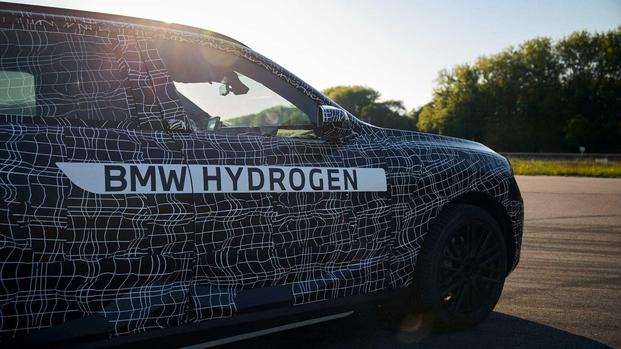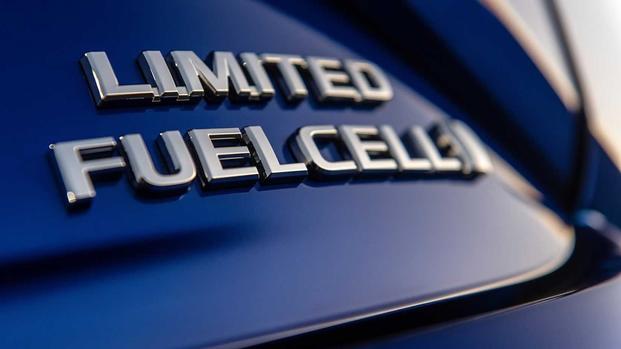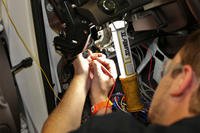Jump Links
- Water Vs. Hydrogen Propulsion
- But Stanley Meyer Built A Water-powered Car... Right?
- Hydrogen Fuel Cell Vehicles
- Misunderstanding Between Hydrogen FCVs & Water-powered Cars
The idea of a water-powered car is one that’s been in the public sphere for many years. It’s captured imaginations for decades, with the promise of it being a revolutionary shift from fossil fuels to a clean resource. But just how much truth is in it being revolutionary, or is it just a pipedream? Surely it’s a real thing, given how it’s fueled by stories of inventors like Stanley Meyer pushing the boundaries and the allure of a straightforward replacement for the environmental crisis the world is facing. The concept is still very much alive and relevant in popular culture.
However, the reality is that the science behind water - physical water - is slightly obscured when it comes to powering vehicles. While it’s the most plentiful element in the world, pure water is not a fuel. Instead, it’s a stable compound that requires significant energy to be broken apart, and turned into hydrogen, which can then be used to power cars like the Toyota Mirai. There are many myths around water, but we will clarify why water cannot power vehicles and where and how hydrogen comes into the picture. Once that picture becomes clear, and we understand the many distinctions, we can navigate the green energy landscape and separate fact from fiction.
Water Vs. Hydrogen Propulsion
Isn’t It The Same Thing?

BMW
It’s not uncommon for people to confuse water and hydrogen propulsion. Or if we break it down, water’s role in hydrogen fuel cell vehicles. And the thing is, water and hydrogen are fundamentally distinct. Grabbing the periodic table of elements, water (H2O) is a stable molecule that’s formed when hydrogen and oxygen (O2) combine. On the flip side, hydrogen propulsion uses hydrogen gas (H2) as the energy carrier; it can be burned in an engine or converted to electricity in a fuel cell, with water as the byproduct. And this is where the misconception comes into play: because we (people) see water exiting hydrogen vehicles, we assume that water is the fuel source. However, hydrogen must be produced through energy-intensive processes like electrolysis. This electrolysis splits water into hydrogen and oxygen. Hydrogen, while a clean fuel when burned and used in fuel cells, is not naturally abundant, which makes its application somewhat more challenging.
"I want hydrogen combustion to succeed. And compared to gasoline combustion, it's much better for the environment, presents the same refueling times, and offers similar performance. However, because of its inefficiency compared to a fuel cell, it means more hydrogen is needed, with the tanks taking up all available storage space in a car. Comparatively, a hydrogen fuel-cell vehicle is more efficient, and because it uses electric motors, there's greater performance with instant torque available at all times. Its inherent efficiency also means that you need less hydrogen storage, making it more practical. Fuel cell technology is more viable than hydrogen combustion, but the eternal optimist in me hopes that hydrogen combustion will become more efficient to the point that it one day represents a viable combustion alternative."
- Roger Biermann, Managing Editor, CarBuzz
What Prevents Water From Powering Cars?

Toyota
In a nutshell, water is not an energy source but rather a stable compound with low energy potential. Water is only the end-product of hydrogen and oxygen combining. This process of combination is what releases energy. Water must be split into hydrogen and oxygen using the electrolysis process, which requires even more energy than hydrogen, the end product, can provide.
Furthermore, water does not have the chemical properties that make it a viable fuel option in combustion engines or fuel cells. Gasoline and hydrogen can be converted into energy with little external input. Yet, even when hydrogen is extracted from water, electrolysis is not as efficient as we might think; bulky equipment is needed for this process, and there is still a big lack of infrastructure to support it. Also, hydrogen storage and transport are a massive hurdle, given its low density and high flammability. A car that runs on water? It suddenly becomes a vague statement...
But Stanley Meyer Built A Water-powered Car... Right?
His Claims Were Fraudulent

Toyota
In the 1980s, Stanley Meyer, an American inventor, claimed to have created a “water fuel cell” that could power vehicles using only water. Allegedly, he built a device that could split water into hydrogen and oxygen with minimal energy, with hydrogen being the end-product. His demonstrations included a dune buggy that supposedly was a water-powered car, which garnered widespread media attention. However, Meyer wasn’t transparent in his claims and refused independent testing under controlled conditions, which drew criticism over his claim that his car runs on water.
Following investigations, it came to light that Meyer’s device made use of standard electrolysis and the produced hydrogen wasn’t enough to power a car. Further revelations showed that his patents were vague, the experiment lacked reproducible details, and he also did not provide peer-reviewed evidence. Moreover, critics noted hidden power sources. In 1996, Meyer’s investors sued him and a court ruled his claims fraudulent. He died in 1998, sparking conspiracy theories.
The Legal & Scientific Debunking

Toyota
Meyer may have put the world on notice with his claims about a water-powered car, but the legal system and scientific scrutiny debunked it. Thoroughly. Following the 1996 court case and the verdict that his “water fuel cell” was a scam, it became clear that Meyer misrepresented what his technology could do, with the intent of misleading investors with false promises of a revolutionary energy source.
Meyer claimed to have redefined the fundamentals of physics. In science-y terms, thermodynamics dictates that the energy output cannot exceed input. And secondly, a portion of the energy output is lost as heat. Meyer’s device violated these principles, with his refusal of peer-reviewed studies or independent replications raising eyebrows and suspicion. He was quickly discredited after refusing any and all rigorous testing.
Read the full article on CarBuzz
This article originally appeared on CarBuzz and is republished here with permission.










